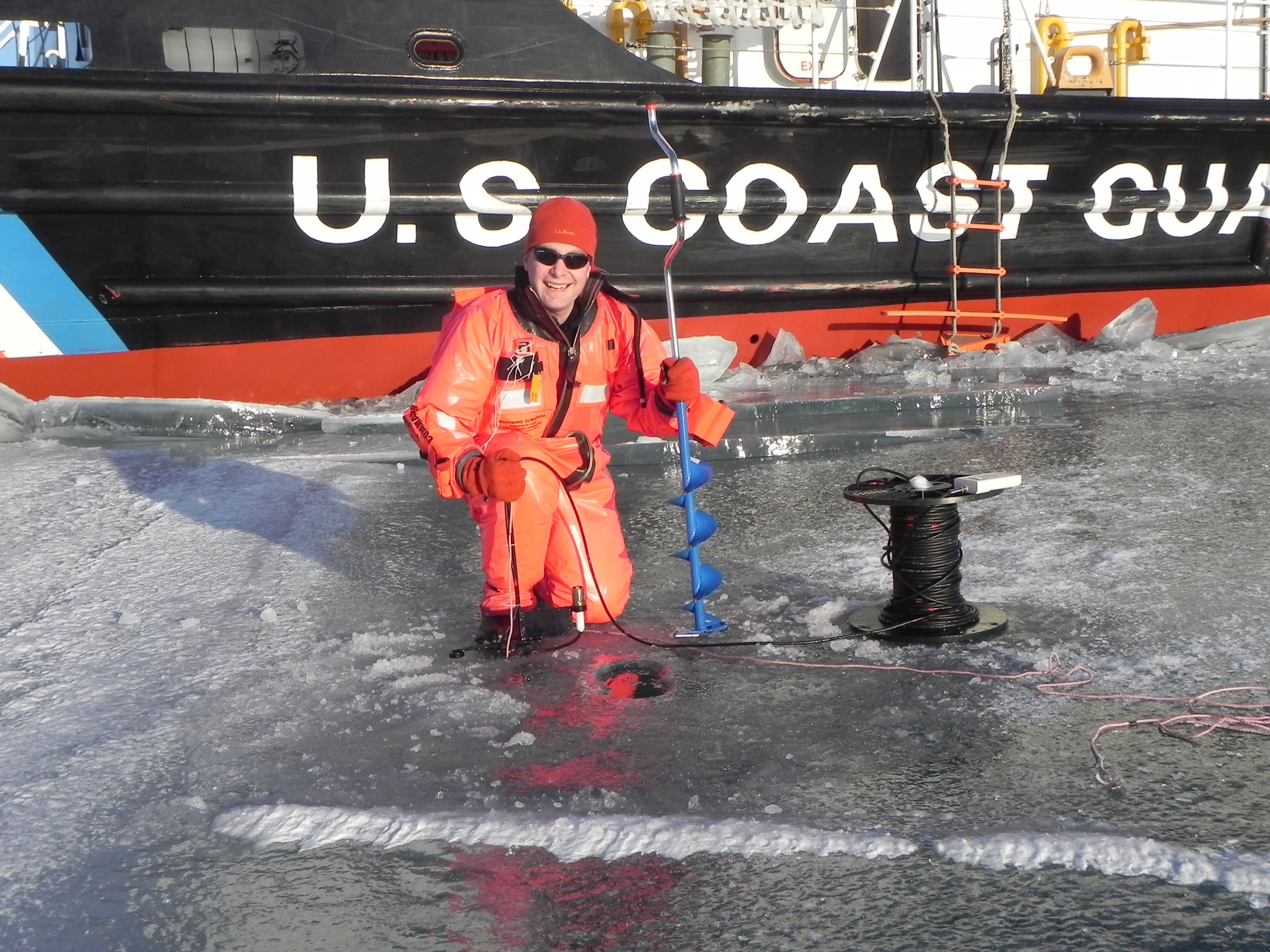 ©2020 Biological and Chemical Oceanography Data Management Office.
©2020 Biological and Chemical Oceanography Data Management Office.Funded by the U.S. National Science Foundation
Description from NSF award:
Winter presents a logistical obstacle to our understanding of lake ecosystems. A recent collaboration of the PIs with the Canadian- and U.S. Coast Guards and their icebreaking programs has facilitated annual winter surveys of Lake Erie since 2007. Conducted during times of expansive ice cover, these surveys have documented high phytoplankton biomass, often in discrete formations and dominated by a filamentous diatom, Aulacoseira islandica. Whereas Lake Erie is characterized by a high annual median ice cover [AMIC] consistent with its relative shallow bathymetry, it also shows extremes in maximum ice extent ranging from ~10% in low ice years to > 99% in high ice years. While maximum ice cover on Lake Eries has reached ~95% each winter from 2007-2010, the winter of 2011-12 is shaping up much differently, with unseasonably warm conditions and almost no ice cover.
The PIs will use a Rapid Response Research (RAPID) grant to investigate the changes in phytoplankton community structure and function during this warm and practically ice-free winter. Specifically, they will test the hypothesis that the warm monomictic mixing regime that occurs in the absence of expansive ice cover suppresses diatom growth in Lake Erie's central basin. This project will provide synoptic data on the concentration of chlorophyll a in near-surface waters at stations throughout Lake Erie during the winter season.
Suppression of abundant winter diatom growth may have important implications for events occurring during summer in Lake Erie. The documentation of abundant winter diatom growth, combined with low measured rates of bacterial decomposition results in net accumulation of algae on the lake bottom. As summer progresses and the hypolimnion warms, bacterial remineralization of the exported diatom biomass accelerates, depleting the hypolimnion of oxygen. These observations are consistent with a new hypothesis on lake function, namely that winter phytoplankton production drives Lake Erie summer hypoxia. Oxygen depletion in Lake Erie's central basin is well documented with effects ranging from enhanced internal nutrient loading to loss of habitat for macrofauna. At its full expanse, the area can exceed 10,000 km2, comparable in surface area to the low oxygen 'dead zone' in the Gulf of Mexico. Thus, deviation from the high phytoplankton biomass accumulation associated with 'typical' winter ice cover may be reflected in higher hypolimnetic dissolved oxygen measured during summer. This research opportunity can help define environmental changes that might be expected in a warming climate.
For additional information see:
Collecting Winter Data on U.S. Coast Guard Icebreakers
Study Plan for the U.S. Coast Guard Survey of Lake Erie in Winter 2011-12
| Dataset | Latest Version Date | Current State |
|---|---|---|
| Lake Erie Ice from stations occupied during Winter 2012, 2013, and 2016 from USCGC and CCGS vessels from the Laurentian Great Lakes (mainly Lakes Huron, Michigan, Erie and connecting waterways) (Lake Erie Ice project) | 2017-08-08 | Final no updates expected |
| Physico-chemical data from winter 2012, 2013, and 2016 from USCGC and CCGS vessels from the Laurentian Great Lakes (mainly Lakes Huron, Michigan, Erie and connecting waterways) (Lake Erie Ice project) | 2017-07-18 | Preliminary and in progress |

Lead Principal Investigator: Robert Michael McKay
Bowling Green State University (BGSU)
Co-Principal Investigator: George S. Bullerjahn
Bowling Green State University (BGSU)
Co-Principal Investigator: Dr Paul F Morris
Bowling Green State University (BGSU)
BCO-DMO Data Manager: Stephen R. Gegg
Woods Hole Oceanographic Institution (WHOI BCO-DMO)
Laurentian Great Lakes Ecosystem Studies [Laurentian Great Lakes Ecosystem Studies]